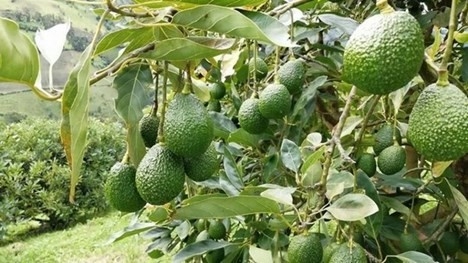Alternate bearing is a condition not unique to the avocado but many other crops as well. Citrus, pears, apples and apricots are just a few other crops which struggle with this problem. The question of what causes alternate bearing and how to minimize it are the subject of ongoing research which will hopefully give us better answers in the future.
Why should we care?
If the avocado markets paid the same price for all sizes from one year to the next and the total pounds produced over an on year and off year cycle were the same, it probably wouldn't matter much. The problem is that such a world does not exist and significantly higher financial rewards are made in years where fruit is scarce than in years where fruit is plentiful. If you're growing avocados to make a profit, you should be concerned about reducing or eliminating alternate bearing.
Why does alternate bearing occur?
There are a number of factors recognized by researchers as contributing to alternate bearing including plant hormones, carbohydrate reserves and competition within the plant for resources. Environmental conditions can also play a major role which, for the most part, are outside of the growers ability to control. Understanding how these factors influence alternate bearing and what we can do about it are key toward reducing or eliminating it in our groves.
Hormones
Gibberellins are considered to be one of the primary hormones produced naturally within the avocado which can influence alternate bearing. They are produced in the embryos of the developing fruit which has led some researchers to suggest fruit thinning after a particularly heavy fruit set to minimize alternate bearing. While labor intensive (there are no EPA approved chemical thinning alternatives for avocados), this step also decreases the carbohydrate sink that retained fruit makes on the trees resources further reducing alternate bearing.
Carbohydrates
Carbohydrates are produced through photosynthesis and provide the energy needed by the avocado to produce fruit, leaves, stems and roots. Depending on the status of the tree and other factors, these available carbohydrates are distributed to areas of the tree where they are needed. When a tree sets a heavy crop, a disproportionate amount of these carbohydrates are often used to develop that crop resulting in lower development of the leaves, stems and roots. While it's the fruit that we're after as commercial growers these other components of the tree are vital to sustain ongoing production in future years and maintain the overall health of the tree. Without maintaining a healthy and robust canopy, roots and limbs, the tree will decline and production will suffer. When an extremely heavy crop is set, the tree may not even have enough carbohydrates available to support full fruit development resulting in small fruit throughout the tree. If the grower does not thin the fruit when these conditions are present, special care should be given to insure that the tree is supplied with ample amounts of nutrients and water to support the existing crop and hopefully allow the tree to produce sufficient carbohydrates for the other needs of the tree. Nature has provided the tree with a defense mechanism to deal with excess fruit set called branch breaking. Many growers overcome this natural defense mechanism by propping up their branches with boards or other devices to prevent branch breaking but special care should be given to those trees where this is done as noted above.
Competition
As noted above, the different parts of the tree are all competing for the plants resources which are typically stored as carbohydrates. By reducing the demand for these resources through fruit removal, pruning or other practices the results of this competition can be minimized resulting in a reduction of alternate bearing tendencies.
Environment
For the most part there's not much a grower can do to alter the groves environment but this factor clearly plays a significant role in alternate bearing. In years where there is excessive heat or cold during the bloom period pollination may be minimal resulting in an off year condition. Alternatively when conditions are ideal, a very heavy crop may set resulting in an on year. By engaging in cultural practices that reduce alternate bearing these environmental factors on alternate bearing may be minimized but the environment is the wild card that all growers must deal with in our groves.
Strategies
Strategies are dependent on whether or not the grove is in an “on” year condition or “off” year condition. On years are when there is a heavy fruit set on the trees and off years are when there is a light fruit set on the trees. In any given grove you may find trees that are in both conditions so the practical approach toward managing you grove is to go with whatever the majority of the trees are showing (either an “on” year or “off” year condition). Below are some suggestions depending on the condition of your grove.
On years
1 Apply higher amounts of fertilizer on your grove than you would normally to support the heavy crop load.
2 Consider thinning the fruit.
3 Heavier pruning will help reduce the crop load and encourage new fruiting wood for next year's fruit set.
Off years
1 Apply lower amounts of fertilizer than in an on year.
2 Prune less in an off year.
3 Consider girdling in October to promote fruit set the following year.
Summary
Alternate bearing is a condition that can be controlled through cultural practices but not eliminated. Even the best groves experience some degree of alternate bearing but, by minimizing the effects, enjoy higher financial returns on their groves.
